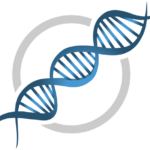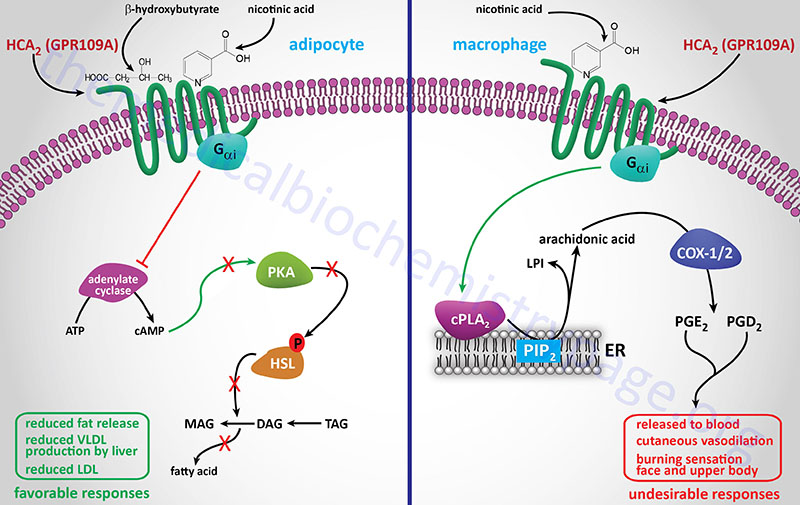C No Ego
Well-Known Member
Hello everyone ... I have not dropped any deep thought or info on here for a while and really miss these type of conversations on open board etc... here is a paste from the grasscity forum thread I started a while back with the latest accumulation of ECS info I've aquired ... not much response there ... still wondering why more people are not into ECS knowledge or talking more about it any time possible etc...
so here goes
Endocannabinoid system ( ECS) is the largest physiological system in mans body .. ECS is the only lipid signaling system to use what's termed, Retrograde signaling . that means that the biochemical lipid signaling messages ( cannabinoids) go backwards to inform cells of their surroundings and allows cells to make signaling adjustments accordingly ( exploring the Matrix/ extracellular space ) .
Predicted that the ECS consists of around 70 trillion cells ! Each cell that is part of metabolically active tissue cells is ECS. ECS is a system that utilizes lipids to form biochemical communication between 70 trillion cells !!! Predicted that each cell that is part of ECS ( 70 trill) signals around 15,000 cannabinoids a second per cell !!! Each cannabinoid message touches interior of cell 7 times before finalizing that signal ( 7 trans membrane super family of receptors / G protein-coupled receptors ) and is why a cell can achieve 15,000 cannabinoid messages a second as one message becomes 7 at a time ....
ECS uses exogenous lipids attained from diet ( essential fatty acids /Arachidonic acid ) ) to make signaling lipid metabolites ( cannabinoids) that are capable of functionally driving the mechanistic action potential of 70 trillion cells while connecting them all together to form an overall pro homeostasis response that protects cells that are pre existing and provides ways for new cells to be generated, new neuronal pathways etc....
chemical formula for the endocannabinoid Anandmide ( N archidonoylethanolamine ) - C22H37NO2 / and 347.53 G/mol in weight
in our cells we can only naturally form C-9 to C-11 then sequester phospholipids from the bi-layer of the cell to make the rest of the fully formed endocannabinoid ( C-22 / C-24) ... the sequestering of those lipids ( pulling from the cells surface) is attained from the cells via accumulation of lipids in the diets of the people hence why essential fatty acids are so important as they are the lipid substrates that make all that extra signaling capable ( C-9/C-11 then = C22/ C/24 etc...)
OK, so there is the system now onto cannabis lipids ...
phytocannabinoids are bio-mickers to endocannabinoids ... that means our cells will use the phytocannabinoid as a lipid signaling communicator in our cells.
phytocannabinoids are C-21 Terpenophenolic meroterpinoids that are Glandular resin secretions created in trcihomes of living cannabis plants . Soil mica ( metallic oxides ) are the base to form them and is why they are anti oxidant compounds in our cells ...
phytocannabinoids in our body act as free form cannabinoids/ free flow cannabinoids ... that means they are already Structured to signal as a fully formed cannabinoid metabolite and need not be sequestered from a cells' bi-layer like the essential fatty acids are used .
So to recap - ECS is 70 trillion cells each signaling 15K biochemical cannabinoids a second per cell !!!! add up that to get a scope of the activity in our cells ... ECS is not even taught in medical schools !!( LOL)
next when I have time I'll talk about Epoxides and fatty acid binding proteins that form endocannabinoids via catabolism derived, Enzymatic Hydrolyitic mechanisms used for oxygenating lipids into biochemicals
Next post /same post
Sea Squirt Developed endocannabinoid system 5 billion years ago . ECS is a way for all Chordate life ( creatures with spinal columns) to maintain cellular homeostasis in the void on nothing ( all time / all space ) .. ECS is the only physiological system in our bodies to use backwards post to pre synaptic communication in Retrograde which as I mentioned in first post allows cells to communicate with one another and make any changes in the cell that are needed from that communication being realized in each cell ....
making a cannabinoid and receptors is a form of oxygenating lipids via utilizing those cellular enzymes that are there to biodegrade lipids into biochemicals.
a Few are DAGL/ MAGL/ CYP450 / PPAR / FAAH /
When we ingest a plant cannabinoid such as from cannabis plant, those same cellular enzymes are needed to biodegrade those plant ligands into communications for ECS to connect with ... in some cases we have endocannabinoid deficiencies ( Severe endocannabinoid deficiencies) from a diet lacking certain lipids that functionally drive ECS mechanisms and our cells go into a state of dormancy etc.... which leads into oxidation related diseases and issues.
Activating the cells with Exogenous plant cannabinoid lipid metabolism can enliven the cells and make them perform again, with all those intracellular enzymatic functions being " turned on " .
Many of the cannabinoid receptors too are Voltage gated / ligand gated ionotropic receptors... using electrical voltage to Catabolize Hydrolytic mechanisms via calcium ions , another way that the cb receptors are crystallized etc....
creating ions in such a way makes free radicals in the cells and another type of cannabinoid receptor deals with that via whats termed Autophogy ( Recycling of damaged cellular components)
OK, so that's all I've got for now , please feel free to post info about the ECS as it is such a new discovery and anything we say about it is like a major revaluation, a paramount acheivment in the face of absolute ignorance and fear
so here goes
Endocannabinoid system ( ECS) is the largest physiological system in mans body .. ECS is the only lipid signaling system to use what's termed, Retrograde signaling . that means that the biochemical lipid signaling messages ( cannabinoids) go backwards to inform cells of their surroundings and allows cells to make signaling adjustments accordingly ( exploring the Matrix/ extracellular space ) .
Predicted that the ECS consists of around 70 trillion cells ! Each cell that is part of metabolically active tissue cells is ECS. ECS is a system that utilizes lipids to form biochemical communication between 70 trillion cells !!! Predicted that each cell that is part of ECS ( 70 trill) signals around 15,000 cannabinoids a second per cell !!! Each cannabinoid message touches interior of cell 7 times before finalizing that signal ( 7 trans membrane super family of receptors / G protein-coupled receptors ) and is why a cell can achieve 15,000 cannabinoid messages a second as one message becomes 7 at a time ....
ECS uses exogenous lipids attained from diet ( essential fatty acids /Arachidonic acid ) ) to make signaling lipid metabolites ( cannabinoids) that are capable of functionally driving the mechanistic action potential of 70 trillion cells while connecting them all together to form an overall pro homeostasis response that protects cells that are pre existing and provides ways for new cells to be generated, new neuronal pathways etc....
chemical formula for the endocannabinoid Anandmide ( N archidonoylethanolamine ) - C22H37NO2 / and 347.53 G/mol in weight
in our cells we can only naturally form C-9 to C-11 then sequester phospholipids from the bi-layer of the cell to make the rest of the fully formed endocannabinoid ( C-22 / C-24) ... the sequestering of those lipids ( pulling from the cells surface) is attained from the cells via accumulation of lipids in the diets of the people hence why essential fatty acids are so important as they are the lipid substrates that make all that extra signaling capable ( C-9/C-11 then = C22/ C/24 etc...)
OK, so there is the system now onto cannabis lipids ...
phytocannabinoids are bio-mickers to endocannabinoids ... that means our cells will use the phytocannabinoid as a lipid signaling communicator in our cells.
phytocannabinoids are C-21 Terpenophenolic meroterpinoids that are Glandular resin secretions created in trcihomes of living cannabis plants . Soil mica ( metallic oxides ) are the base to form them and is why they are anti oxidant compounds in our cells ...
phytocannabinoids in our body act as free form cannabinoids/ free flow cannabinoids ... that means they are already Structured to signal as a fully formed cannabinoid metabolite and need not be sequestered from a cells' bi-layer like the essential fatty acids are used .
So to recap - ECS is 70 trillion cells each signaling 15K biochemical cannabinoids a second per cell !!!! add up that to get a scope of the activity in our cells ... ECS is not even taught in medical schools !!( LOL)
next when I have time I'll talk about Epoxides and fatty acid binding proteins that form endocannabinoids via catabolism derived, Enzymatic Hydrolyitic mechanisms used for oxygenating lipids into biochemicals
Next post /same post
Sea Squirt Developed endocannabinoid system 5 billion years ago . ECS is a way for all Chordate life ( creatures with spinal columns) to maintain cellular homeostasis in the void on nothing ( all time / all space ) .. ECS is the only physiological system in our bodies to use backwards post to pre synaptic communication in Retrograde which as I mentioned in first post allows cells to communicate with one another and make any changes in the cell that are needed from that communication being realized in each cell ....
making a cannabinoid and receptors is a form of oxygenating lipids via utilizing those cellular enzymes that are there to biodegrade lipids into biochemicals.
a Few are DAGL/ MAGL/ CYP450 / PPAR / FAAH /
When we ingest a plant cannabinoid such as from cannabis plant, those same cellular enzymes are needed to biodegrade those plant ligands into communications for ECS to connect with ... in some cases we have endocannabinoid deficiencies ( Severe endocannabinoid deficiencies) from a diet lacking certain lipids that functionally drive ECS mechanisms and our cells go into a state of dormancy etc.... which leads into oxidation related diseases and issues.
Activating the cells with Exogenous plant cannabinoid lipid metabolism can enliven the cells and make them perform again, with all those intracellular enzymatic functions being " turned on " .
Many of the cannabinoid receptors too are Voltage gated / ligand gated ionotropic receptors... using electrical voltage to Catabolize Hydrolytic mechanisms via calcium ions , another way that the cb receptors are crystallized etc....
creating ions in such a way makes free radicals in the cells and another type of cannabinoid receptor deals with that via whats termed Autophogy ( Recycling of damaged cellular components)
OK, so that's all I've got for now , please feel free to post info about the ECS as it is such a new discovery and anything we say about it is like a major revaluation, a paramount acheivment in the face of absolute ignorance and fear







